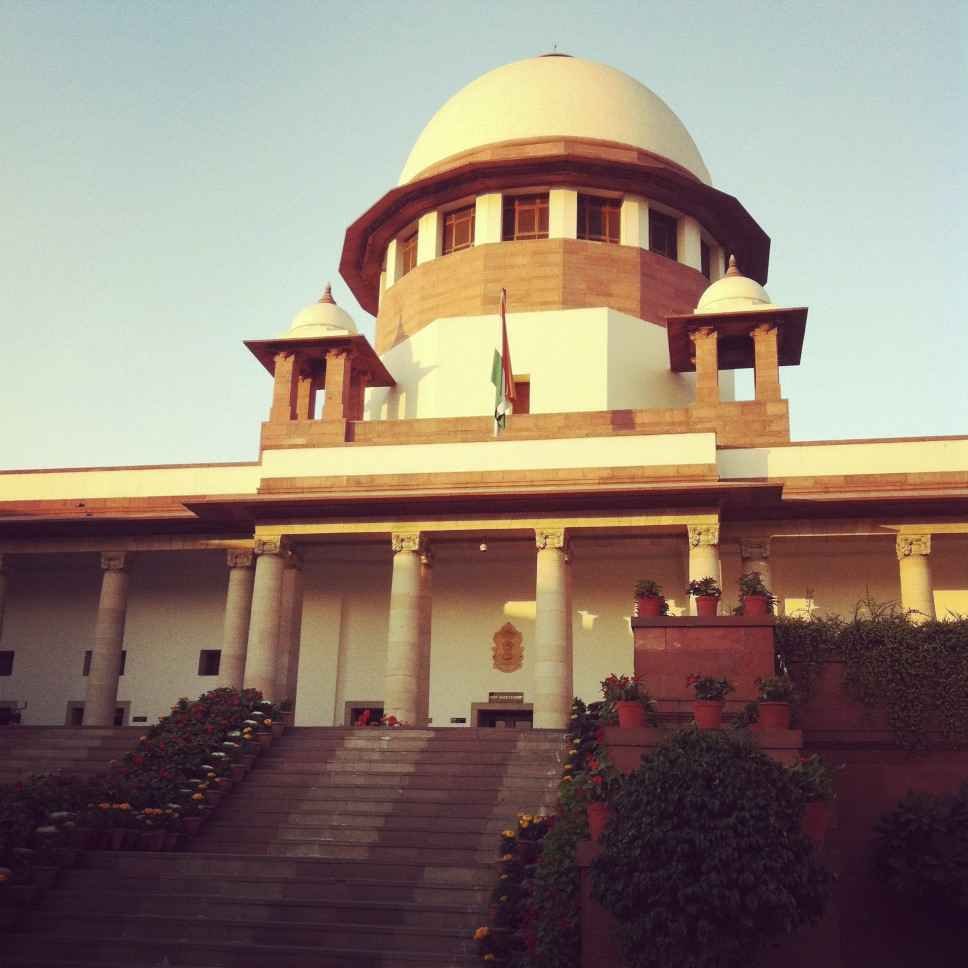The Constitution makers of India adopted the concept of Supreme Court from the United States of America.
However, unlike the U.S.A., the Supreme Court in India is not the sovereign body. It is endowed with vast powers and functions including the power of judicial review.
ADVERTISEMENTS:
In the last 55 years of its working, the court has helped in strengthening democracy, protecting people’s right and checked authoritarianism.
It is vested with administrative powers over courts lying below it. Indian constitution provides for a ‘single integrated judiciary with the Supreme Court, at the top of hierarchy.
1. Composition:
The Supreme Court at present consists of Chief Justice and 25 other Judges. In 1950, it had only eight Judges. Parliament was, however, authorized to change the number of its Judges. On account of the increase in its work load, the strength of the Supreme Court judges has been raised from time to time.
In 1956, the Parliament passed the Supreme Court Number of Judges Act, which raised the total strength to 11.
ADVERTISEMENTS:
In 1960, the Supreme Court number of Judges Amendment Act was passed further raising the strength of the Court Judges to 14 including the Chief Justice. Its strength was further increased to 18 in 1977. In 1986 it was increased to 25.
2. Appointment:
Article 124 a judge of the Supreme Court is appointed by the President in consultation with such of the judges of the Supreme Court and of the High Court in the States as the President may deem necessary for the purpose.
In the Case of appointment of a Judge other than the Chief Justice, the Chief Justice of India must be consulted.
In practice, the appointment of the Chief Justice of India as well as of the other judges of the Supreme Court is recommended by the Home Ministry and after the matter has been examined by the Appointments Committee of the Indian Cabinet and the decision receives the blessings of the Prime Ministers, it is formalized by the Indian President.
ADVERTISEMENTS:
In Supreme Court Advocates on Record Association (SCARA) Versus Union of India 1993, the Supreme Court held the opinion that appointment of Judges is an “Integrated Participatory Consultative Exercise.” There must not be any appointment to the higher Judiciary against opinion expressed by Chief Justice of India.
In case of appointment of Chief Justice of India, it is usually the senior most judges who are elevated to the post. But, this convention was broken in 1977 when A.N. Ray superseded three colleagues (J.M. Shelat, K.S. Hedge, and A.N. Grover) in 1977 Mirza Hamidullah Beg superseded H.R. Khanna. However, since 1980 senior most judges is appointed as Chief Justice.
An acting CJ may be appointed by President in case a vacancy arises.
The Chief Justice of India with the prior consent of President may appoint a Judge of High Court to sit and act as Judge of Supreme Court provided; it then, session of the Supreme Court cannot be held or continued for want of a quorum. (Article 127).
Similarly, when there is pending business before the Supreme Court, the Chief Justice, with the consent of the President may request in writing the attendance of a retired Judge of SC to act as Judge of SC.”
Salary:
Provided in Second Schedule
Chief Justice: 1, 00,000
Other Judges: 90,000 (same of CAG)
In addition, each judge is also entitled to a free House and certain other allowances and privileges. Neither the salary, allowances, and privileges, nor his rights in respect of leave of absence or pension can be varied to his disadvantage after his appointment. However, the salaries of the Judges may be reduced by a law of Parliament during a grave financial emergency proclaimed by the President.
3. Qualifications:
A person shall not be qualified for appointment as a Judge of the Supreme Court unless he is a citizen of India and:
(a) has been for at least five years a Judge of a High Court or of two or more such courts in succession; or
(b) has been worked for at least ten years as an advocate of a High Court or of two or more such courts in succession; or
(c) is, in the opinion of the President, a distinguished jurist.
The inclusion of the last provision which would enable the President to appoint a distinguished jurist on the Supreme Court, even if he did not qualify by a specified number of years of practices at the Bar, was intended to open a wider field of choice.
4. Tenure:
No minimum age is prescribed for appointment as a Judge of the Supreme Court, nor any fixed period office. Once appointed, a Judge of the Supreme Court may cease to be so, on any one of the following grounds (other than death); (a) on attaining the age of 65 years; (b) on resigning his office by writing addressed to the President; (c) on being removed by the President upon an address to that effect being passed by a special majority of each House of Parliament.

